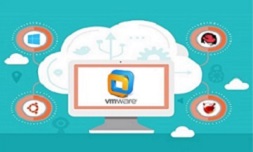Install VMware Workstation Player on Linux
VMware Workstation Player can also be installed on a Linux host. Supported Linux distributions are:
• Ubuntu 8.04 and above
• Red Hat Enterprise Linux 5 and above
• CentOS 5.0 and above
• Oracle Linux 5.0 and above
• openSUSE 10.2 and above
• SUSE Linux 10 and above
On most Linux distributions, the Linux bundle installer is installed using the GUI. However, on some Linux distributions, the bundle installer starts a command-line wizard instead of a GUI wizard. You can also manually start the command-line wizard using the –console option, if you want to use the shell for installation.
We will show you how to install Player on an openSUSE host. First, you will need to download the Linux bundle installer, available on the following link.
Next, become root. On most Linux distributions, this is accomplished using the su – command:
bob@linux-bv3p:~> su - Password: linux-bv3p:~ #
Navigate to the directory in which you’ve stored the installer file:
linux-bv3p:/ # cd /tmp/player linux-bv3p:/tmp/player # ls VMware-Player-12.5.7-5813279.x86_64.bundle
Make the bundle script executable by entering the following command:
linux-bv3p:/tmp/player # chmod +x VMware-Player-12.5.7-5813279.x86_64.bundle
Run the script in order to start the installation:
linux-bv3p:/tmp/player # ./VMware-Player-12.5.7-5813279.x86_64.bundle
The installer should start. The installation is pretty straightforward and you can accept the defaults.
After the installation is finished, you can log out of the root account. You do not need to be root to run Player.
To start Player, simply run the vmplayer command in the shell.



